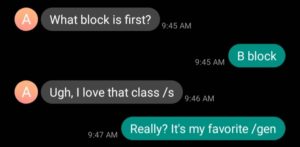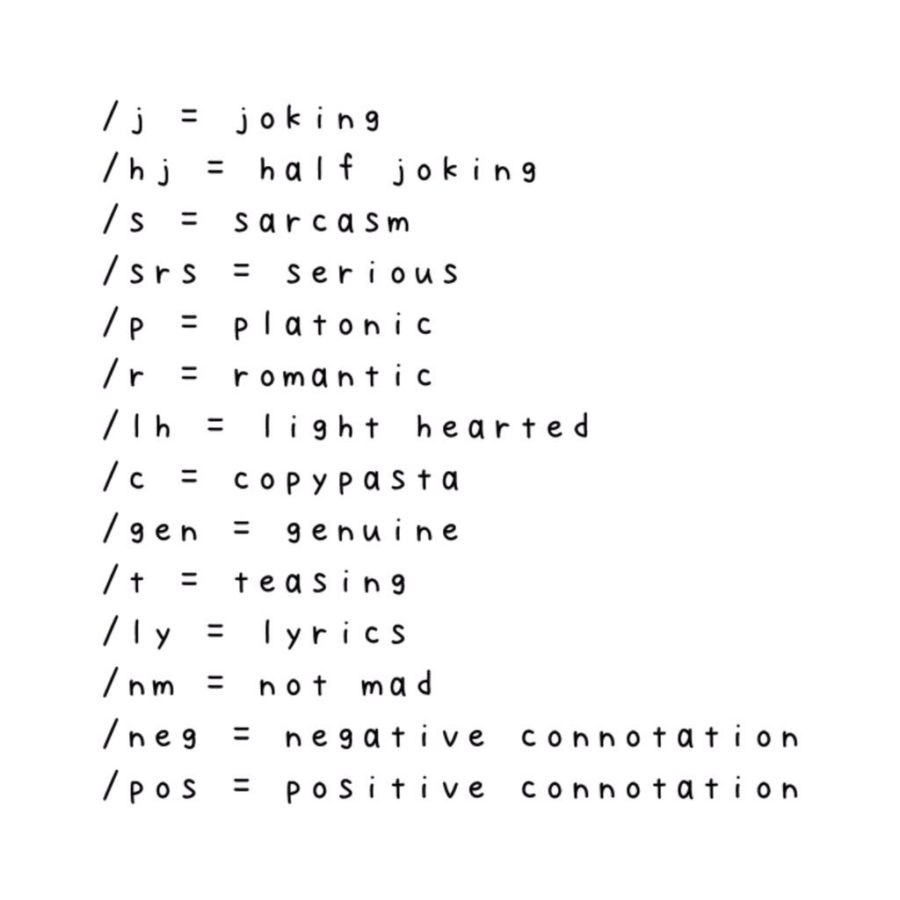Tone indicators, explained
December 13, 2021
If you are active in any text-based online communities, you may have noticed abbreviations such as /s, /j, or /srs at the end of messages or posts. But what do they mean? And what are they for?
These abbreviations are called tone indicators, and they are meant to clarify tone in conversations that happen over text. Each abbreviation stands for it’s own tone of voice, such as sarcastic (/s), joking (/j), or serious (/srs). To use them, you add one that represents your tone to the end of your message. Tone indicators are especially helpful for neurodivergent people, such as autistic people, who may have trouble reading tone both in writing and spoken language.
Tone of voice is an important part of communication in English and many other languages. Without it, it can be harder to understand the meaning of someone else’s words. While in longer writing, tone can be conveyed with writing strategies, conveying tone over casual text conversations is difficult. How can you tell the difference between an angry “okay” and a neutral, or happy one?
You might end a sentence with a period to indicate anger, or a smiley face to show happiness. However, these methods are inconsistent throughout different groups, like age groups or social circles. Adults usually don’t use punctuation to express tone, and teenagers don’t usually use emojis to represent what they mean literally. For example a skull emoji may represent death to an adult, but to a teen could represent laughing, as in “I’m dead.” Tone indicators create more consistency in how tone is expressed online.
Neurodivergent people are often more affected by the lack of clarity in casual text conversations. Social cues that may seem obvious to everyone else are not always clear for neurodivergent people. Tone indicators were made specifically to aid these people and to reduce stress by taking the guesswork out of reading tone in messages.
Here are some examples of tone indicators (this is not an exclusive list):
/s – sarcastic
/j – joking
/srs – serious
/gen – genuine
/lh – light hearted
/nm – not mad
/pos – positive connotation
/neg – negative connotation
Consider this example without tone indicators:

Now the same text exchange with tone indicators:

Ending a thought, sentence, or message, with a tone indicator is a simple way to make online spaces more accessible.











![The GHS/MERHS senior cross country runners pose together on Senior Night. [Photo courtesy of Manchester-Essex Athletics]](https://thegillnetter.com/wp-content/uploads/2025/10/Screenshot-2025-10-10-at-11.18.29-AM.png)




















yūkiro_souls • Sep 7, 2024 at 9:34 am
thanks, i’ve been wondering what these things mean / gen >×<